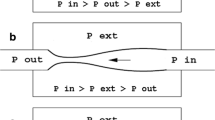Abstract
Status migrainosus (SM) is defined as a severe migraine attack, usually poorly responsive to treatments, lasting more than 72 h. Recurrent SM predicts chronic migraine (CM) development in 83.7% of cases. There is evidence that in most unresponsive CM patients a sinus stenosis-associated raised intracranial pressure is causatively involved in migraine chronification. To test the hypothesis that SM may reflect a sustained rise in intracranial pressure, we tested the efficacy of a 3-day treatment with intravenous mannitol 18% 250 ml b.i.d. in seven subjects presenting with a SM unresponsive to common treatments, showing unilateral or bilateral sinus stenosis at magnetic resonance venography. Mannitol infusion induced the abrupt reduction or the disappearance of pain in all patients, at least along the 3 days of treatment. While the benefit was only observed during the days of treatment in two subjects, in the remaining five patients the time to the next headache was delayed between 20 days to 5 weeks after mannitol infusion. Due to the lack of any analgesic property of mannitol, our data indicate that in this series a rise in intracranial pressure was involved in SM causative mechanisms.

Similar content being viewed by others
References
Headache Classification Committee of the International Headache Society (2013) The International Classification of Headache Disorders, 3rd Edition (beta version). Cephalalgia 33(9):629–808
Nierenburg H, Newman LC (2016) Update on new daily persistent headache. Curr Treat Options Neurol 18(6):25
Modi SY, Dharaiya D, Katramados AM et al (2016) Predictors of prolonged hospital stay in status migrainosus. Neurohospitalist 6(4):141–146
Singh TD, Cutrer FM, Smith JH (2017) Episodic status migrainosus: a novel migraine subtype. Cephalalgia. doi:10.1177/0333102416686341
Farb RI, Vanek I, Scott JN et al (2003) Idiopathic intracranial hypertension: the prevalence and morphology of sinovenous stenosis. Neurology 60:1418–1424
Friedman DI, Liu GT, Digre KB (2013) Revised diagnostic criteria for the pseudotumor cerebri syndrome in adults and children. Neurology 81(13):1159–1165
Fofi L, Giugni E, Vadala R et al (2012) Cerebral transverse sinus morphology as detected by MR venography in patients with chronic migraine. Headache 52(8):1254–1261
Bono F, Salvino D, Tallarico T et al (2010) Abnormal pressure waves in headache sufferers with bilateral transverse sinus stenosis. Cephalalgia 30(12):1419–1425
Bono F, Cristiano D, Mastrandrea C et al (2010) The upper limit of normal CSF opening pressure is related to bilateral transverse sinus stenosis in headache sufferers. Cephalalgia 30:145–151
De Simone R, Ranieri A, Montella S et al (2014) Intracranial pressure in unresponsive chronic migraine. J Neurol 261(7):1365–1373
De Simone R, Ranieri A, Cardillo G et al (2011) High prevalence of bilateral transverse sinus stenosis-associated IIHWOP in unresponsive chronic headache sufferers: pathogenetic implications in primary headache progression. Cephalalgia 31(6):763–765
Donato T, Shapira Y, Artu A et al (1994) Effect of mannitol on cerebrospinal fluid dynamics and brain tissue edema. Anesth Analg 78(1):58–66
Albright AL, Latchaw RE (1985) Effects of osmotic and oncodiuretic therapy on CT-brain density and intracranial pressure. Acta Neurochir (Wien) 78(3–4):119–122
Mendelow AD, Teasdale GM, Russell T et al (1985) Effect of mannitol on cerebral blood flow and cerebral perfusion pressure in human head injury. J Neurosurg 63(1):43–48
Tang SC, Lin RJ, Shieh JS et al (2015) Effect of mannitol on cerebrovascular pressure reactivity in patients with intracranial hypertension. J Formos Med Assoc 114(9):842–848
Lin SY, Tang SC, Tsai LK et al (2015) Incidence and risk factors for acute kidney injury following mannitol infusion in patients with acute stroke: a retrospective cohort study. Medicine (Baltimore) 94(47):e2032
De Simone R, Ranieri A, Montella S et al (2014) The role of dural sinus stenosis in idiopathic intracranial hypertension pathogenesis: the self-limiting venous collapse feedback-loop model. Panminerva Med 56(3):201–209
De Simone R, Ranieri A, Bonavita V (2017) Starling resistors, autoregulation of cerebral perfusion and the pathogenesis of idiopathic intracranial hypertension. Panminerva Med 59(1):76–89
Author information
Authors and Affiliations
Corresponding author
Ethics declarations
Conflict of interest
The authors certify that there is no actual or potential conflict of interest in relation to this article.
Rights and permissions
About this article
Cite this article
De Simone, R., Ranieri, A., Ferra, G. et al. Intravenous mannitol in status migrainosus treatment: a clinical case series. Neurol Sci 38 (Suppl 1), 163–167 (2017). https://doi.org/10.1007/s10072-017-2883-z
Published:
Issue Date:
DOI: https://doi.org/10.1007/s10072-017-2883-z



